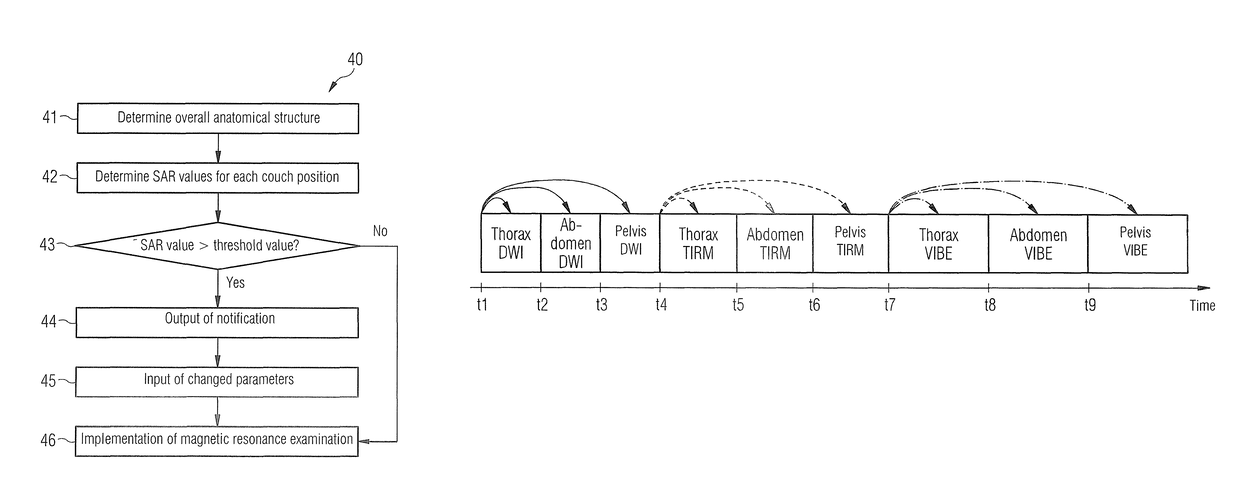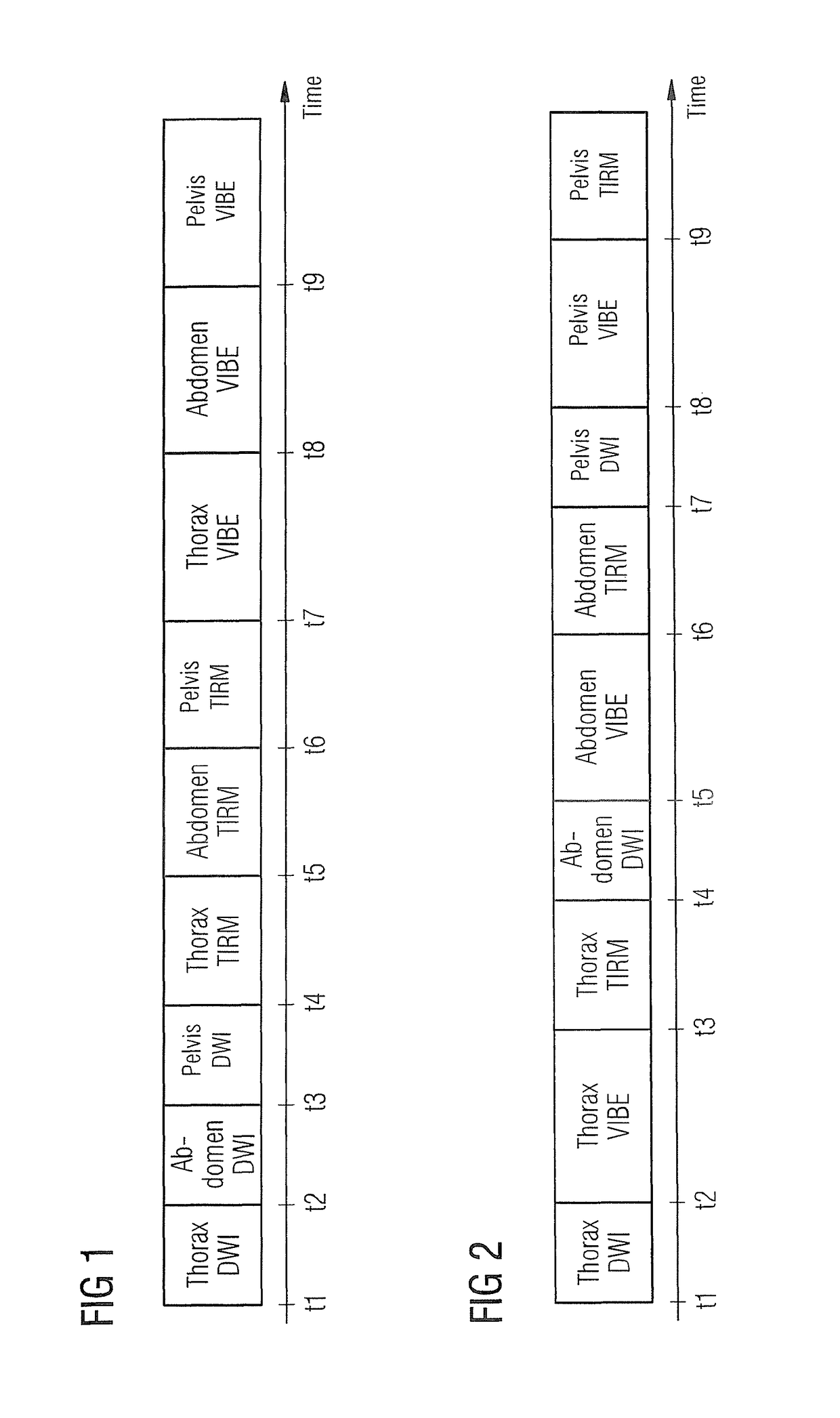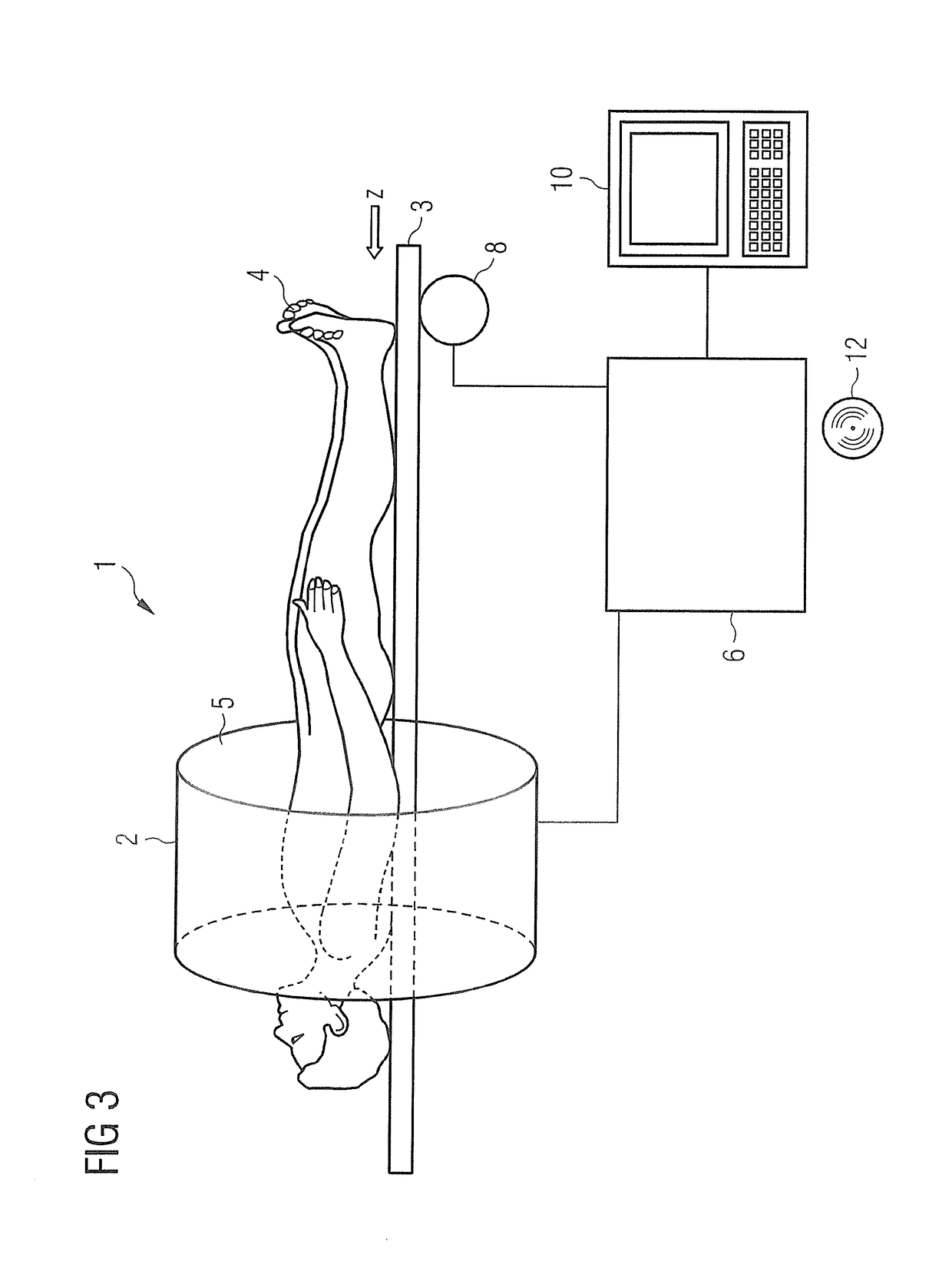Implementation of a magnetic resonance examination at several bed positions in the scanner
a technology of magnetic resonance and scanner, which is applied in the direction of magnetic measurement, measurement using nmr, instruments, etc., can solve problems such as tissue heat, and achieve the effect of easy determination
- Summary
- Abstract
- Description
- Claims
- Application Information
AI Technical Summary
Benefits of technology
Problems solved by technology
Method used
Image
Examples
Embodiment Construction
[0028]FIG. 3 is a schematic illustration of a magnetic resonance apparatus 1. The magnetic resonance system 1 includes a scanner (data acquisition unit) 2, an examination bed 3 for an examination subject 4, which can be moved on the examination bed 3 through an opening 5 of the scanner 2, a control computer 6, an evaluation apparatus 7 and a drive unit 8. The control computer 6 actuates the scanner 2 and receives signals from the scanner 2, which are recorded by the scanner 2. In order to generate the magnetic resonance data, the scanner 2 has a basic field magnet (not separately shown), which generates a basic magnetic field B0, and a gradient field system (not separately shown), for generating gradient fields. Furthermore, the scanner 2 includes one or more radio-frequency antennas for generating radio-frequency signals and for receiving measurement signals, which are used by the control computer 6 and the evaluation apparatus 7 for generating magnetic resonance images. The contro...
PUM
 Login to View More
Login to View More Abstract
Description
Claims
Application Information
 Login to View More
Login to View More - R&D
- Intellectual Property
- Life Sciences
- Materials
- Tech Scout
- Unparalleled Data Quality
- Higher Quality Content
- 60% Fewer Hallucinations
Browse by: Latest US Patents, China's latest patents, Technical Efficacy Thesaurus, Application Domain, Technology Topic, Popular Technical Reports.
© 2025 PatSnap. All rights reserved.Legal|Privacy policy|Modern Slavery Act Transparency Statement|Sitemap|About US| Contact US: help@patsnap.com



